Optical microscopes or probe stations can benefit from adding spectroscopy and digital color imaging with the 508PVTM microscope spectrophotometer. The 508PV™ can also be used to upgrade older microspectrometers with new capabilities as well as new detectors, electronics and software.
A suitable microscope can gather transmission, reflectance, polarization, or even fluorescence and luminescence spectra of microscopic samples when used with the 508PVTM, which connects to an open photoport.
The 508PVTM spectrophotometer, which uses CRAIC's LightbladesTM spectrophotometer technology, has a useful spectral range that extends from ultraviolet to near-infrared. Users may quickly, easily, and non-destructively obtain high-quality spectra of even sub-micron samples with the 508PVTM.
For a wide range of applications, including colorimetry of pixels on flat panel displays, reflectometry of vitrinite coal and petroleum source rock, and thin film thickness measurements of semiconductors and optics, the 508PVTM microscope spectrophotometer is perfect. Upgrading outdated microspectrometers to the newest models with the most recent hardware and software is also affordable with the 508 PVTM.
It is possible to set up the 508 PVTM Microscope Spectrophotometer to record spectra in the deep ultraviolet to near-infrared range. It can be used with a microscope to obtain absorbance, reflectance, and fluorescence spectra and pictures.
508PV Spectrometer For Your Microscope
Video Credit: CRAIC Technologies
Key Features
Add the 508 PV™ to any Microscope or Probe Station for Spectroscopy, Colorimetry, and Micro Spot Film Thickness.
- Utilizes LightbladesTM spectrophotometers that are made especially for microspectroscopy.
- The usable spectral range is from 250 to 2100 nm, with the user-selected range ranging from deep UV to NIR.
- Variable measuring regions that are constantly calibrated, even at the micron level
- To increase long-term stability and signal-to-noise ratios, thermoelectric cooling is an option.
- Incorporates color, high-quality digital images with a maximum resolution of six megapixels.
- Equipped with imaging control and analysis software and LambdafireTM spectroscopy features. Touchscreen control is also included with LambdafireTM.
- Variable, calibrated measuring regions that are even smaller than a micron
- Microspectroscopy via transmission
- Microspectroscopy via reflectance
- Fluorescence microscopy in action
- Polarization microspectroscopy
- Photoluminescence microscopy
- Measurements of thin film thickness
- Colorimetry in small-scale specimens
- Measurements of refractive index using the rIQTM package
- Operation: completely automated or manual
- Exact control of sample temperature
- Specialized program with NIST traceability that includes statistical analysis, spectrum databasing, image processing, and more
- NIST standards for traceable microspectrometers
- Simple to operate and maintain
UV-vis-NIR Microspectroscopy
Adding Spectroscopy to the Microscope™
A spectrophotometer with an imaging system built in, the 508PVTM is intended to be added to any microscope or probe station with a photo port. With its ability to function in a range of wavelengths from the deep ultraviolet to the visible and near-infrared, this potent instrument adds functionalities to systems, such as colorimetry and film thickness measurements.
Using LightbladesTM technology, the 508PVTM lets users analyze the transmission, reflectance, polarization, and photoluminescence spectra of materials as small as sub-microns.
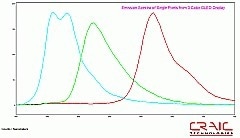
Image Credit: CRAIC Technologies
Photoluminescence
Cutting Edge Fluorescence and Luminescence
It is possible to set up the 508PVTM for luminescence and fluorescence spectroscopy of even sub-micron samples. The 508PVTM, equipped with LightbladesTM technology, is an effective instrument for photoluminescence study in various fields such as materials sciences, biology, geology, and more. It can detect fluorescence and luminescence from the UV to the NIR.
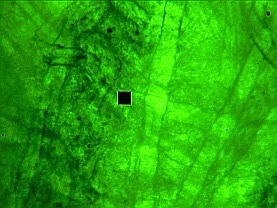
Image Credit: CRAIC Technologies
Polarization
Polarization Microspectroscopy
It is possible to set up the 508PVTM to record the polarization spectrum of tiny materials. The 508PVTM polarization microspectroscopy capabilities, equipped with LightbladesTM technology, make getting spectra of birefringent and other kinds of samples simple and quick.
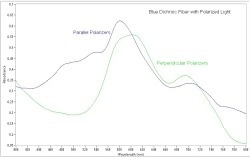
Image Credit: CRAIC Technologies
Spectral Surface Mapping
5D Spectral Surface Mapping™
Combines technology and software to enable microscopic spatial resolution, 5D mapping of samples, and automated spectrum analysis. Creating 5D maps of a sample's absorbance, transmission, reflectance, fluorescence, emission, and Raman spectra is possible.
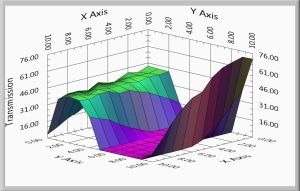
Image Credit: CRAIC Technologies
Imaging & Microscopy
High-Resolution Color Digital Imaging
With advanced software, the 508PVTM offers color digital imaging with great resolution. Users can view the sample and the spectrophotometer entrance aperture simultaneously. This facilitates full-color image capture under all measurement situations and sample alignment for measurements.
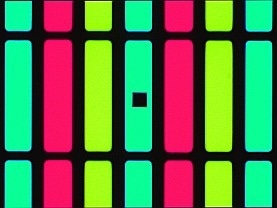
Image Credit: CRAIC Technologies
Applications
- Enhance a microscope with spectroscopy.
- Measure the thickness of thin films at a probe station.
- Revitalize an antiquated microspectrophotometer
- LCD and OLED display calorimetry
- Rock used as a petroleum source, coal, and coke's vitrinite reflectance
- Research on biotechnology